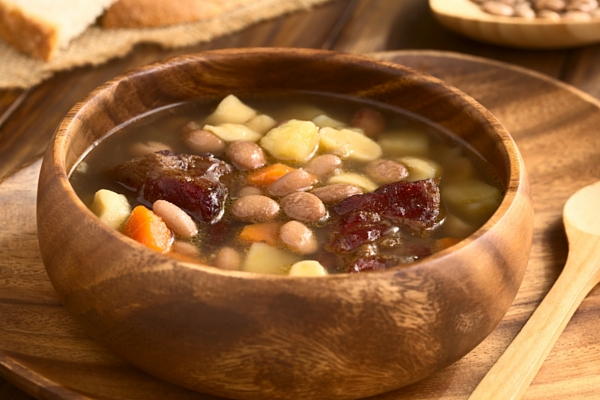Protein Rich Foods
Meat, poultry, fish and eggs together with legumes (beans and lentils) are valuable sources of nutrients and add variety to our meals. They are the main providers of protein, iron and zinc. I refer to them as protein-rich foods. Each food makes a unique contribution and I am concerned that many people following a vegetarian diet just stop eating animal foods without replacing essential nutrients.
Protein Foods Supply Many Nutrients
The table below provides example values for nutrients per 100g serve of food.
| Meat & alternatives | Protein (g) | Iron (mg) | Zinc (mg) | Long chain omega 3 (mg) | Energy (kJ) |
| Red meat | 27 | 2.35 | 5.09 | 95.5 | 780 |
| Poultry | 28 | 0.8 | 1.6 | 19 | 700 |
| High omega 3 fish (>500) e.g. salmon, blue-eye trevalla | 25 | 0.9 | 0.6 | 1897 | 960 |
| Medium omega 3 fish (301-500) e.g. Australian sardine, silver perch | 23 | 0.8 | 1 | 500 | 650 |
| Low omega 3 fish (200-300) e.g. snapper, John Dory | 24 | 0.6 | 0.5 | 200 | 500 |
| Eggs | 13 | 1.7 | 1.2 | 91 | 590 |
| Legumes | 9 | 1.9 | 1.1 | 0 | 450 |
Legumes
The iron content of legumes appears to be nearly the same as red meat, but the type of iron (non-haem) in legumes and eggs is less absorbable. The nutrient reference values suggest that non-haem iron is 80% less available than the haem iron in meat, poultry and fish. This is why serve sizes of legumes and eggs are larger.
Legumes offer a range of health benefits that are still being investigated. Research into longevity has identified that eating legumes (beans) is common to all long-livers in Blue Zone communities. Legumes as part of a plant-based diet, an active lifestyle, supportive relationships and a positive outlook are key ingredients for living well to 100+ years.
What is a Serve?
By choosing a good balance of protein-rich foods we can meet our nutritional needs even on vegetarian diets. The serve sizes listed below are based on nutrient and energy contributions. Your serves may vary from these, for example you may have 50g of chicken in your sandwich at lunch and 80g steak with your evening meal. The Australian Dietary Guidelines suggest including up to 450g (total) of red meat per week and up to 7 eggs per week. Aim for 2 serves per day from the following options:
- 65g cooked red meat (90-100g raw) e.g. ½ cup lean mince or 2 small chops or 2 slices roast meat OR
- 80g cooked chicken e.g. small chicken breast fillet (100g raw) OR
- 100g cooked fish (115g raw) OR
- 120g eggs e.g. 2 large OR
- 170g cooked legumes (tofu, lentils, canned beans) as a meat, poultry or fish substitute OR
- 210g cooked legumes if you eat a vegetarian diet
During pregnancy extra serves of these foods are needed to provide for the body’s higher iron requirements. Some women may be recommended an iron supplement too. Be guided by your health practitioner in the choice of supplement and the dosage. Chronic tiredness might be a sign of having low iron levels (even if you are not pregnant). Iron deficiency is easily diagnosed with a blood test. In upcoming posts I will further explore protein-rich foods.
